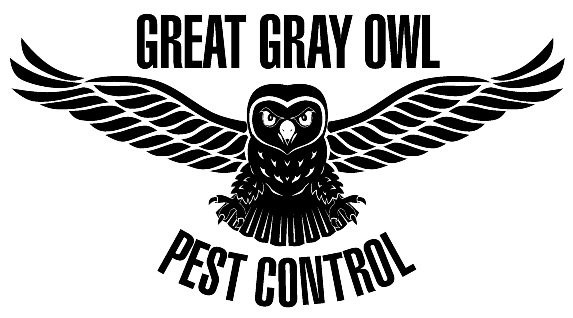Beneficial Insect Facts

We do not offer pest control services for honey bees, bumblebees, praying mantis and other beneficial insects. However, if you have any concerns about honey bees nesting inside your walls, for example, we may be able to offer advice or resources to help.
Profiles of some of the most beneficial insects may be found in our drop-down menu, or click on the below links:
Only a relatively few kinds of insects are harmful. In fact, beneficial insects far outnumber those which are pests. In North America alone, the worth of pollinating insects is estimated in the billions annually.
But insects can do more than pollinate. Here are some other ways we benefit from insects:
- Insects provide useful materials such as silk from the silkworm, and honey and beeswax from the honey bee. Tannic acid, produced from certain insect galls (swellings on plant tissue caused by insects), is used to tan leather. Some insect galls also contain materials for dye. A scale insect yields the substance from which shellac is made.
- Fish, birds including chickens and turkeys, and some mammals eat insects. For example, insects provide well over 20 percent of the coyote's diet in some areas.
- Insects not only improve the texture and aerate the soil by digging and burrowing, but their decomposing bodies and droppings add important nutrients to the soil.
- Insects, by feeding on dead plants and animals, help to break down materials so they can be more quickly used as nutrients in the soil.
- Many insects have been extremely important to science. The best known of these is probably the drosophila fly or fruit fly which is used in the study of genetics. They have also been important in other fields of study such as sociology and psychology. Insects have helped develop the principles of polyembryony (the study of more than one offspring from one embryo), and parthenogenesis, which is the study of reproduction from an unfertilized egg.
- The beauty of some insects has been a source of inspiration to artists and designer throughout history. Butterfly colors and wing designs, for example, are often copied in jewelry.
- Just as some insects attack crops, there are others that destroy weeds, such as the moth borer, which feeds on prickly pear plants. However, some of these insects can adapt their tastes quickly to other plants and may become pests.
Insects that eat other insects are either predators or parasites. Predators feed mainly on smaller or weaker insects and live apart from their prey, while parasites live in or on the bodies of their hosts. Examples of predators include dragonflies and damselflies which feed on mosquitoes and moths, ground beetles and tiger beetles which feed on gypsy moth larvae, ladybird beetles and their larvae, which eat plant-sucking aphids, and lacewing larvae (Aphid lion), which also eats aphids.
Some wasps feed on grasshoppers and caterpillars and some species of stingbugs feed on caterpillars. The praying mantis eats a variety of insects.
Most of the parasitic insects are either flies, bees or wasps.
One of the most useful of the parasitic flies to man is the tachinid fly. It lays its eggs on the skin of caterpillars. The hatching larvae burrow into their host and feed on the caterpillar's muscle and fat tissue. When it is ready to emerge, the tachinid larva digs out through the skin of the paralyzed caterpillar, which dies. Tachinids are extremely valuable in controlling armyworms and European corn borers.
Here are more beneficial insects:
- Ambush bugs feed mainly on bees, wasps and flies.
- Braconid wasps are parasites of European corn borers, leaf mining sawflies and bark beetles. They develop in silken cocoons on the outside of their host.
- Bumblebees and honey bees are extremely important for pollinating and for producing honey and beeswax.
- Some caddis fly larvae feed largely on mosquito larvae.
- Carrion beetles lay their eggs on small dead animals such as birds and mice and the larvae feed on the decaying flesh.
- Syrphid flies eat the aphids which damage plants by sucking their juices.
- Damsel bugs eat many insects but especially aphids and caterpillars.
- In their immature stages, damselflies and dragonflies feed on mosquito larvae. The adults eat mosquitoes and moths.
- Ichneumonids are parasites of many pests including horntails, sawflies, moths and the larvae of wood wasps and beetles.
- Ladybird beetles in both their larval and adult forms eat plant-sucking aphids.
- Mayfly naiads (young) and adults are a major food for fish, since they often emerge in large numbers from lakes.
- Milkweed butterfly larvae eat milkweed. The best-known member of the group is the monarch butterfly.
- Numerous wasps, such as trichogrammatid wasps, parasitize the eggs of many forestry pests
- Predatory diving beetles are usually found in ponds and quiet streams. Both larvae and adults eat a variety of small aquatic animals.
- Scarab beetles feed on rotting plant and animal matter.
- Sphecid, digger, and mud dauber wasps deposit an egg on a caterpillar, cicada or other insect which has been paralyzed by stinging. the food and egg is tored in a hollowed plant stem, or in a nest dug in the ground or fashioned out of mud and suspended from the underside of a structure. Mud dauber wasps can become a pest when they make their mud nests around the eaves of homes and cottages. (See Mud Daubers in our Home & Cottage Services.)
- Spider wasp larvae eat spiders which are captured and paralyzed by the adult wasp, and put in a cell in the ground. Eggs are then laid on the spider.
- Some stoneflies are predators in their aquatic stage and are also eaten by fish.
- Water boatmen are said to eat mosquito larvae but their chief food is probably algae or pond-bottom ooze.
- Water striders in their immature and adult stages eat living and dead floating insects

